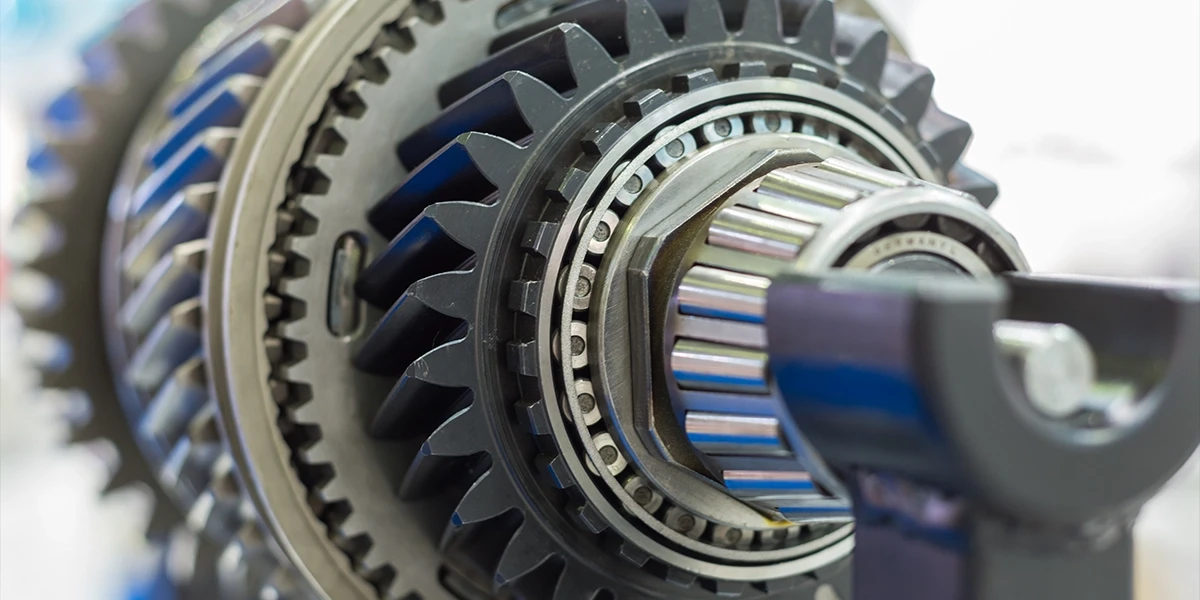Pneumatic tools use compressed air for power. They are essential in various industries. Workers know these tools for their efficiency and durability. Automotive workshops and large-scale manufacturing plants widely use them. Pneumatic tools include impact wrenches and die grinders. Air-powered tools help maintain productivity and precision. However, to maximize the performance of these tools, choosing the right air compressor is crucial. This blog will explore the air compressor requirements needed to support high-performance pneumatic tools.
Pneumatic tools, also known as air-powered tools. These tools utilize compressed air to generate the force needed to perform tasks such as fastening, grinding, and cutting. Many industries favor these tools. They offer several advantages over electric tools, including higher torque, lighter weight, and lower maintenance requirements.
Some of the most common pneumatic tools include:
The pneumatic impact wrench delivers high torque. Automotive repair widely uses this tool. Assembly lines also use this tool for tightening or loosening nuts. Workers use it to loosen bolts efficiently.
These tools are used for precision grinding, sanding, and cutting, particularly in metalworking and automotive industries.
It is often used in assembly and disassembly tasks. Pistol grip pneumatic tools provide ergonomic handling and are suitable for repetitive tasks. Each of these tools requires a specific amount of compressed air to function effectively. This brings us to the importance of selecting the right air compressor.
Compressed air powers pneumatic tools. It drives the moving parts within these tools. This enables them to perform their functions. The tool's effectiveness depends on the air quality. Consistent compressed air ensures optimal performance. The air compressor supplies this essential compressed air.
There are several factors to consider when it comes to the compressed air requirements for pneumatic tools:
Pneumatic tools require a certain level of air pressure, measured in pounds per square inch (PSI), to operate effectively. If the air pressure is too low, the tool may not function properly, leading to decreased performance and productivity.
The air flow, measured in cubic feet per minute (CFM), indicates the volume of air delivered by the compressor. Different tools require different CFM levels. For instance, a pneumatic impact wrench may require more CFM than a die grinder.
The duty cycle refers to the amount of time an air compressor can operate without needing to cool down. High-performance pneumatic tools may require a compressor with a higher duty cycle to ensure continuous operation.
Selecting the right air compressor is vital for ensuring that your pneumatic tools operate at their full potential. Here are some key considerations when choosing an air compressor:
Each pneumatic tool has a recommended operating pressure, usually indicated by the manufacturer. Ensure that the air compressor can deliver at least this amount of PSI consistently. For most pneumatic tools, a compressor with a PSI rating between 90 and 120 is sufficient.
Identify the CFM requirements for each pneumatic tool you plan to use. Tools like impact wrenches generally require higher CFM compared to tools like die grinders. Determine the necessary CFM by adding the CFM requirements of all tools. Calculate the total CFM for tools that you will use simultaneously. Choose a compressor that meets or exceeds this demand.
If your operations require continuous use of pneumatic tools, select an air compressor with a high-duty cycle. Industrial-grade compressors often have a 100% duty cycle, meaning they can run without needing a break.
The tank size of the air compressor impacts how long the compressor can run before needing to recharge. Larger tanks provide a more consistent air supply. This is crucial for high-demand pneumatic tools like impact wrenches and die grinders. We recommend a tank size of at least 20 gallons for most industrial applications.
Single-stage compressors compress air to the desired PSI in one stroke, making them suitable for light to moderate tasks. Two-stage compressors, on the other hand, compress air in two stages. Resulting in higher PSI and CFM, making them ideal for heavy-duty applications involving multiple pneumatic tools.
Depending on your workspace, you may need a portable air compressor that is easily portable. Additionally, consider the compressor's noise level, especially for use in a confined space. Some manufacturers design compressors with noise-reduction features to minimize disruption.
Let’s take a closer look at how to match air compressors with some common pneumatic tools:
This tool typically requires a high CFM and PSI for optimal performance. A two-stage compressor with a CFM rating of 5-8 and a PSI of 90-120 is ideal. Ensure the compressor has a large enough tank to provide a consistent air supply during prolonged use.
These tools often require a lower CFM compared to impact wrenches, but still need a consistent air supply. A single-stage compressor with a CFM rating of 4-6 and a PSI of 70-90 can usually meet the needs of most die grinders. If you use multiple grinders simultaneously, you might need a two-stage compressor.
These tools are typically used in assembly lines and require moderate airflow and pressure. A compressor with a CFM of 3-5 and a PSI of 70-90 should be sufficient. We recommend a compressor with a high-duty cycle for continuous operations.
Industrial settings often prefer pneumatic tools. It's important to compare them to electric tools. This helps in understanding the unique benefits pneumatic tools offer.
Pneumatic tools, especially impact wrenches, deliver higher torque than electric tools, making them more suitable for heavy-duty tasks. This is important in the automotive and manufacturing industries. These industries require high torque for tasks. Workers use high torque to loosen tight bolts or nuts efficiently.
Pneumatic tools have fewer moving parts compared to electrical tools, resulting in less wear and tear and a longer lifespan. Additionally, they require less maintenance, as there are no electrical components that can burn out.
Pneumatic tools are generally lighter than their electric counterparts, reducing operator fatigue during prolonged use. The lighter weight, combined with designs like the pistol grip, enhances ergonomics and allows for more precise control.
Pneumatic tools are generally safer in environments where flammable materials are present.
The effectiveness of pneumatic tools depends on the air compressor's quality and performance. Understand your pneumatic tools' specific air requirements. Select an air compressor that meets these needs. This ensures your tools operate at their full potential. This leads to improved productivity and efficiency. Use impact wrenches in an automotive workshop. Use die grinders in a metalworking facility. Use pistol grip tools on an assembly line. The right air compressor provides consistent, reliable compressed air. This keeps your operations running smoothly.
In competitive industries, master the relationship between pneumatic tools and air compressors. This is key to maintaining high performance. It helps achieve long-term success.
High-performance pneumatic tools are essential assets in various industries, offering unmatched power, durability, and efficiency. To ensure these tools operate at their peak, selecting the right air compressor is crucial. Understand the specific air requirements of your pneumatic tools. Align them with your air compressor's capabilities. This maximizes the effectiveness of your pneumatic tools. It reduces downtime and enhances productivity overall.
When you partner with eINDUSTRIFY for high-performance pneumatic tools, you’re choosing quality, reliability, and expertise. Our range of pneumatic tools is comprehensive. We are committed to customer satisfaction. We equip your operations with the best tools. These tools provide maximum efficiency and durability. Whether you need heavy-duty impact wrenches or precision die grinders, we provide effective solutions. We drive your business forward with our dedication. Trust eINDUSTRIFY as your partner in success. We offer top-tier pneumatic tools for the toughest challenges. Explore the eINDUSTRIFY range today and experience the difference that premium industrial lubricants can make for your business. Reach us by emailing us at info@eindustrify.com or call us at +1 (888) 774 7632. To register for access to a premium global marketplace.
Q 1. What is the correct size of an Air Compressor for Pneumatic Tools?
Ans: The air compressor size will depend on the tool requirements. If you are using powerhouses like this, the minimum compressor should be a 100-litre single-stage that's performing on at least 4-5 CFM (cubic feet per minute) at 90 PSI.
Q 2. What factors should we consider while choosing an air compressor for heavy-duty pneumatic tools?
Ans: Choose an air compressor that meets the CFM and PSI requirements of the tool. To ensure that heavy-duty tools are properly supported, make sure the compressor has a high CFM rating and a tank capacity of at least 20 gallons.
Q 3. Why is CFM So Important for Pneumatic Tools?
Ans: CFM-count Cubic feet per minute (CFM) is the airflow volume an air compressor can deliver. CFM — Airflow management or CFM is needed to run a high-performance pneumatic tool; therefore, the correct compressor must output flow as required by the job at the end.
Q 4. Can I use my portable air compressor with high-performance pneumatic tools?
Ans: Yes, portable air compressors can be utilized as long as they satisfy the CFM and PSI criteria of your equipment. To find portable units suitable for high-performance tasks, select those with a high CFM rating and a tank size that is adequate.
Q 5. What impact does the tank size have on the performance of air compressors used for pneumatic tools?
Ans: With a bigger tank, the compressor can hold more air, decreasing the frequency of refills. This is beneficial for pneumatic tools with high performance that need to operate continuously without any decrease in pressure.
Tags: Pneumatic tools Die Grinders Moving Parts Compressed Air Pneumatic Impact Wrench Air Compressors Air Powered Tools Pneumatic
RECENT POSTS:

Top DC Motors for Industrial Automation

How to Select the Right Control Valves for Your System

Air Compressors for Sale: Compare Models, Brands, Features

Essential Power Transmission Accessories for Industries

Best Industrial Sensors for Automation

Uses of Industrial Control Equipment

Top Bearings and Power Transmission Solutions

Buy Battery Energy Storage Systems Now